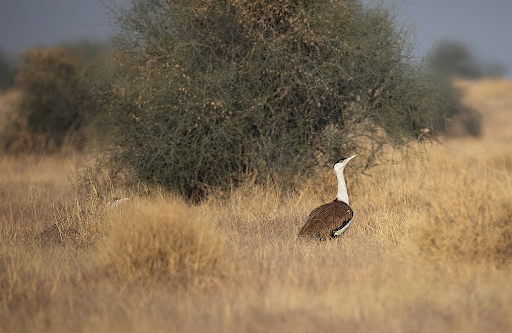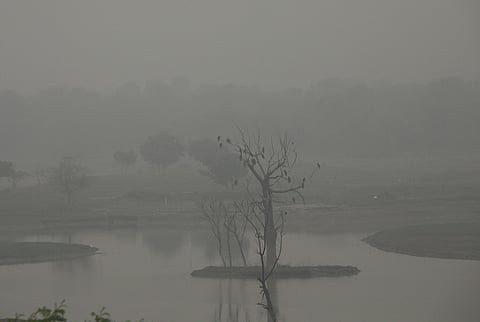




Source: DOWNTOEARTH
Disclaimer: Copyright infringement not intended.
Primates are crucial for tropical forest ecosystems as seed dispersers and ecological indicators.
Many primates are critically endangered due to habitat destruction, hunting and climate change.
The report Primates in Peril 2023–2025 identifies the 25 most endangered primates globally.
|
Category |
Details |
|
Scope |
Africa, Asia, Madagascar, South America (Neotropics) |
|
New Additions |
15 primates new to this list, 8 added for the first time |
Continental Breakdown
|
Region |
No. of Species |
|
Asia |
9 |
|
Africa |
6 |
|
Madagascar |
4 |
|
South America (Neotropics) |
6 |
Cross River Gorilla (Gorilla gorilla diehli)
Location: Cameroon & Nigeria (border region)
Status: Critically Endangered (IUCN)
Threats: Habitat fragmentation, bushmeat hunting, low genetic diversity
Tapanuli Orangutan (Pongo tapanuliensis)
Location: Sumatra, Indonesia
Status: Critically Endangered (IUCN)
Notable Fact: Smallest population among all great apes (<800 individuals)
Threats: Infrastructure projects, habitat degradation
Phayre’s Langur (Trachypithecus phayrei)
Distribution: Eastern Bangladesh, northeastern India, western Myanmar
Status: Endangered (IUCN)
Concerns
50–80% decline in population suspected over three generations
Fragmented, shrinking habitats
Threats: Hunting, habitat loss, illegal trade, electrocution and roadkills
Hybridization with capped langurs may affect genetic integrity
Western Hoolock Gibbon (Hoolock hoolock)
Distribution: Northeast India, Eastern Bangladesh, and parts of Myanmar
Status: Endangered (IUCN)
India’s Only Ape
Primary Threats
Habitat destruction from tea gardens, jhum cultivation, infrastructure
Hunting for food and medicine
Illegal pet trade
Local extinctions in fragmented habitats
|
Challenge |
Description |
|
Habitat Fragmentation |
Due to agriculture, roads, plantations |
|
Lack of Research |
Poor population data and genetic studies |
|
Poaching & Trade |
Targeted for meat, medicine, and pet trade |
|
Hybridization |
Undermines species identity (e.g., Phayre’s Langur) |
|
Lack of Enforcement |
Weak implementation of conservation laws |
Primates are a diverse group of mammals that includes lemurs, monkeys, apes and humans.
They belong to the order Primates under the class Mammalia.
India is home to a wide range of primates, many of which are endemic and some are endangered.
Characteristics of Primates
|
Trait |
Description |
|
Opposable thumbs |
Adapted for grasping objects and climbing |
|
Large brain-to-body ratio |
Advanced cognitive functions |
|
Stereoscopic vision |
3D depth perception for life in trees |
|
Social structure |
Complex social behaviors and hierarchies |
|
Parental care |
Prolonged infant dependency and learning |
|
Diet |
Omnivorous – fruits, leaves, insects, etc. |
Classification of Primates
|
Suborder |
Examples |
Key Features |
|
Strepsirrhines |
Lemurs, Lorises |
More primitive, strong sense of smell |
|
Haplorhines |
Monkeys, Apes, Humans |
Larger brains, better vision |
India hosts 15 species of primates, some of which are endemic and endangered.
Major Native Species
|
Species |
Status (IUCN) |
Range |
Remarks |
|
Lion-tailed macaque (Macaca silenus) |
Endangered |
Western Ghats |
Endemic, arboreal |
|
Nilgiri langur (Semnopithecus johnii) |
Vulnerable |
Western Ghats |
Black fur, yellow mane |
|
Hoolock gibbon (Hoolock hoolock) |
Endangered |
Northeast India |
Only ape in India |
|
Bonnet macaque (Macaca radiata) |
Least Concern |
South India |
Adaptable to human habitations |
|
Rhesus macaque (Macaca mulatta) |
Least Concern |
North & Central India |
Widely distributed |
|
Capped langur (Trachypithecus pileatus) |
Vulnerable |
Northeast India |
Arboreal & social |
|
Gee’s golden langur (Trachypithecus geei) |
Endangered |
Assam, Bhutan |
Sacred, limited range |
Legal Protection
Wildlife Protection Act, 1972: Most primates are in Schedule I, providing maximum protection.
Forest (Conservation) Act, 1980.
Protected Areas & Reserves
|
Species |
Protected Area |
|
Lion-tailed macaque |
Silent Valley NP, Kalakkad Mundanthurai TR |
|
Nilgiri langur |
Periyar TR, Mukurthi NP |
|
Hoolock gibbon |
Namdapha NP, Hollongapar Gibbon Sanctuary |
|
Golden langur |
Chakrashila WLS, Manas NP |
Conservation Programs
Project Lion-tailed Macaque by Kerala and Tamil Nadu Forest Departments.
Translocation and rescue operations in urban conflict zones.
India is part of UNESCO’s Man and Biosphere Programme.
Many Indian primates are included in Appendix I of CITES restricting international trade.
Sources:
|
PRACTICE QUESTION Q. Conservation of lesser-known primate species is as critical as that of charismatic megafauna.” Discuss with reference to India’s primate diversity and conservation efforts. 250 words |






© 2026 iasgyan. All right reserved